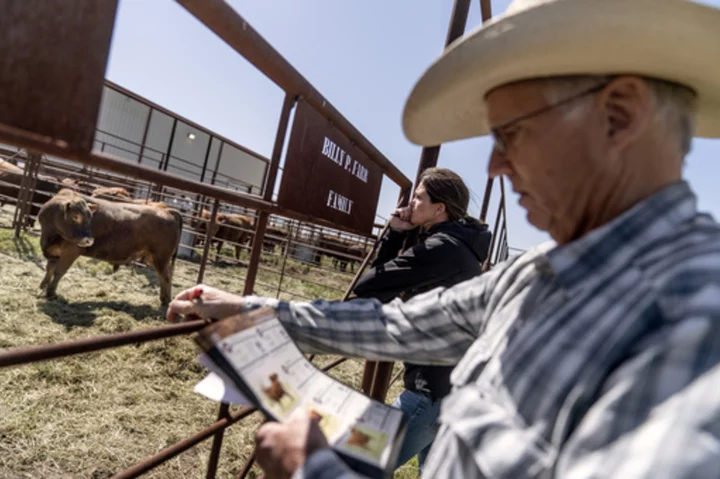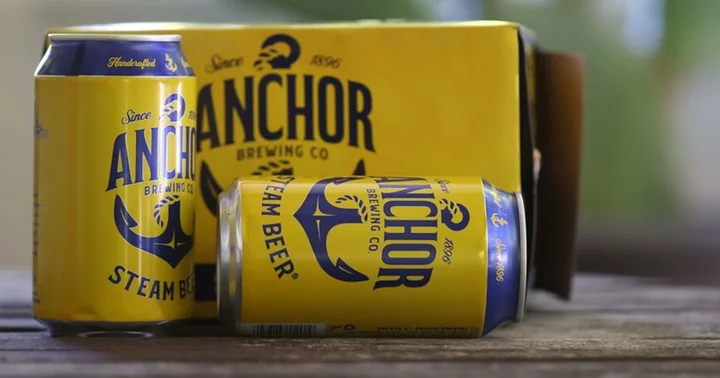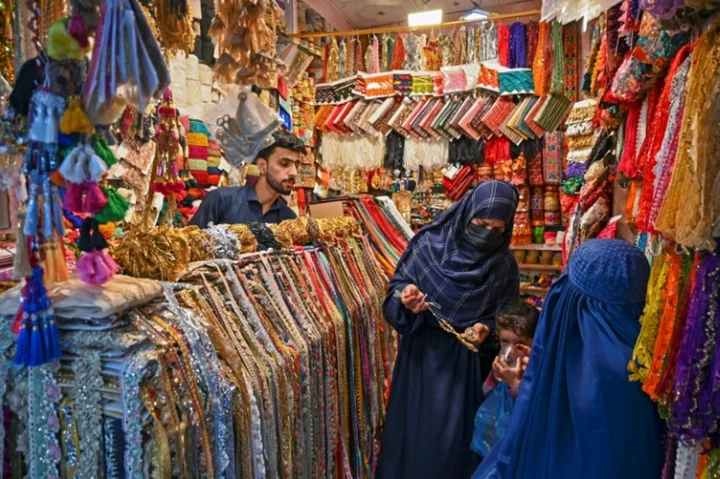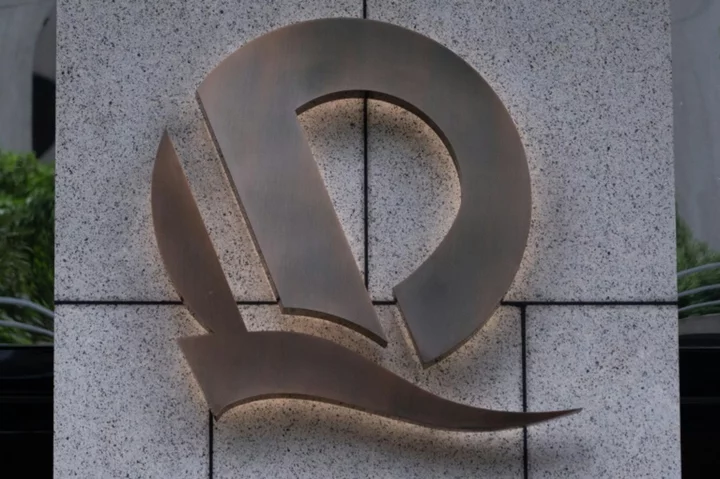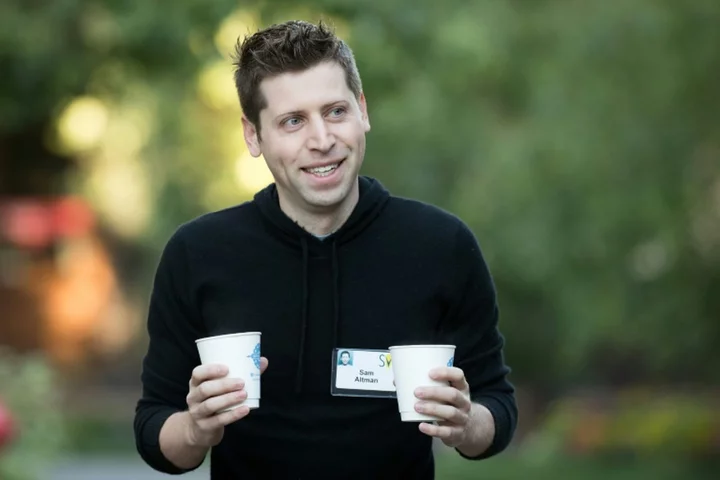ROSSTON, Texas (AP) — The cattle part as Meredith Ellis edges her small four-wheeler through the herd, silently counting the cows and calves. It’s the way she starts most days on her 3,000-acre Texas ranch: ensuring all the cattle are safe, deciding when they should move to another pasture, and ensuring the grass is as healthy as her animals.
“We’re looking for the sweet spot where the land and cattle help each other,” Ellis says as she rumbles down a dirt road to check on another herd. “You want to find that balance.”
Much of Ellis’ work evolved from the ranching her father practiced for decades. Her parents built this ranch, and it’s where Ellis was raised. Now it’s her turn to make the decisions. She’s implemented changes her father couldn’t dream of — because for her and other ranchers, their livelihoods and the future of the planet are on the line.
For generations, beef has been a way of life in Texas, the most quintessential of American main courses, and a premium protein around the world. It’s also the single most damaging food for the planet. Beef is the largest agricultural source of greenhouse gasses worldwide. It has a bigger carbon footprint than any other type of protein.
___
EDITORS’ NOTE — This story is part of The Protein Problem, an AP series that examines the question: Can we feed this growing world without starving the planet? To see the full project, visit https://projects.apnews.com/features/2023/the-protein-problem/index.html
___
Climate scientists say the answer is simple: Eat less beef and raise fewer cattle. But most people around the world are consuming more beef, not less.
Ellis finds herself at ground zero. Texas has by far the most cattle in the U.S., which is the biggest producer of beef in the world. And it’s here that Ellis believes she can make a difference.
“I don’t want to do this if it isn’t good for the environment,” Ellis said. “I want ranching to be part of the climate solution.”
For Ellis, that solution lies in the practice of regenerative ranching. In theory, it’s a holistic way to look at the earth, animals, and water — and how they all interact. In practice, it’s an exhausting, never-ending process of moving her cattle to different pastures in an effort to restore the soil.
“What I’m looking to do is make a major impact and completely redefine the beef industry,” Ellis, 41, said. “I want to take everyone with me.”
Ellis took over the ranch, north of Dallas, in 2013. She’s faced all the critical questions surrounding the beef industry, but no issue has been more important than beef’s contribution to climate change. Cattle belch out serious amounts of greenhouse gases, especially methane — about 220 pounds a year of methane, which is 80 times more harmful than carbon dioxide, the main greenhouse gas spewed out by cars.
Overall, beef production creates enough carbon that cutting herd sizes by even 10% to 20% could make a difference, experts say.
They agree that reducing consumption, particularly in America, is a clear place to start. Americans eat the equivalent of about three hamburgers a week, research shows, and if they cut that in half and instead export U.S. beef to other countries, the world would have a greater chance of meeting demand without cutting forests and expanding cattle grazing lands.
For Ellis, regenerative ranching is not only the most efficient but the most environmentally responsible route. The theory harkens back to the 30 million bison that once thundered through the Plains states. Herds would seemingly annihilate grasslands by eating the vegetation and pummeling the ground. The ground looked trashed, but their hoofs stimulated the soil. The animals coated the ground with nitrogen-rich waste. The animals left for months or even years, allowing grasses to grow.
Regenerative ranchers try to do roughly the same by moving cattle frequently. They’re kept in spaces where they can trample grass and soil and then move on. The goal is to produce more grass that will generate deep roots to take carbon from the air and permanently store it underground.
For Ellis, regenerative ranching means moving her family’s herd of 320 cows, calves and heifers plus several bulls through 58 fenced pastures. In daily checks, Ellis and her ranch manager examine not only the animals but the grass.
“It’s a state of symbiosis to where the cattle benefit from the land and the land benefit from the cattle,” she said.
In most ranches, that’s still how it’s done. Thousands of ranchers are incorporating regenerative practices, but only a small percentage have completely transformed their operations.
Ellis has opened her ranch to researchers from the nonprofit Ecosystem Services Market Consortium for readings from hundreds of sites. So far, their study shows Ellis’ work is making a difference: Each year the ranch is sequestering about 2,500 tons of atmospheric carbon dioxide — equivalent to the annual emissions from about 500 cars. That number has inched up as Ellis makes more changes.
“THE MOST IMPORTANT THING”Ellis sees global warming altering her land. She calls it an “existential crisis,” the backdrop to the endless to-do list.
After a long day, she likes to take a moment to remember why she does it. She watches over a gate as dozens of cows graze amid the lush grass and a setting sun and says, “I could stand here all evening.”
Ellis knows she could make more money selling in a niche market. She could sell her land for development.
But Ellis has other plans. She’s taken a leadership role in a group that wants to see industry-wide change, with animal welfare and land sustainability practices eventually leading to higher prices for ranchers who adapt.
“That is the most important thing I could possibly do with my life,” Ellis said. “At the end of the day, no amount of money or anything could persuade me to do otherwise.”
___
The Associated Press Health and Science Department receives support from the Howard Hughes Medical Institute’s Science and Educational Media Group. The AP is solely responsible for all content.

